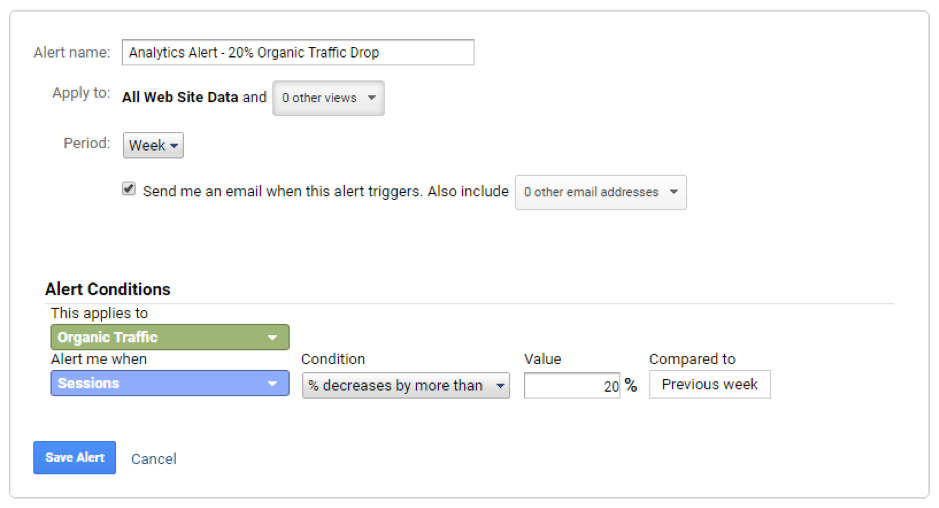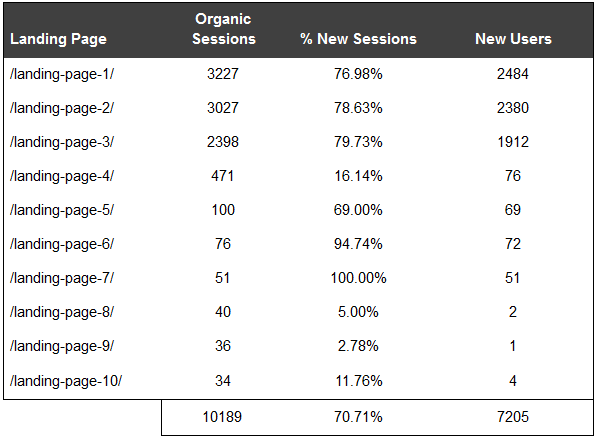Technical SEO lays the foundation for any successful SEO campaign. Ensuring the technical side of your SEO is on track is imperative in order to achieve long-term success.
Used correctly, Google Analytics can enable you to identify any core issues your website might have, contextualize and prioritize technical SEO work, and measure the impact of work undertaken.
The Importance of Technical SEO
Technical SEO should be an integral part of every business’s SEO strategy. Search engines need to be able to effectively read and index your website, and you need your website to compete effectively against your competitors. After all, Google is far more likely to favour a site that has paid due attention to their technical SEO than one that hasn’t.
However, to enhance and maintain your website’s technical SEO, you need expert knowledge and industry-recognised tools to do the job.
[Case Study] Improving rankings, organic visits and sales with log files analysis
What does Technical SEO Actually Involve?
Technical SEO is far from a tick box exercise – it requires consistent monitoring and reactive work undertaken over time. Even if your website isn’t changing, search engines are, and their technical expectations and capabilities are evolving all the time. At the least, you should be considering the following:
- Crawlability & indexability
- Site architecture
- Security & compliance
- Sitemaps
- Site errors
- Site speed
- UX and UI Usability
- Schema
- Tracking & measurement
- International Targetting
- On-page SEO
– URLs
– Titles & meta-descriptions
– Headings & content
One of the best ways to identify and monitor the technical health of your website is to undertake frequent audits. Not only do these highlight areas for improvement, but they also help you to monitor the progress of your efforts. However, you’re unlikely to have the capacity to run audits every day. If something changes or breaks on your website, by the time you do your next audit the damage could already be done. This is where Google Analytics comes in.
Three Ways Google Analytics is Essential to Your Technical SEO
Immediately identifying Issues that need attention
Google Analytics is your number one indicator of technical SEO issues. Unlike an in-depth technical SEO audit, Google Analytics gives you an instant overview of the real-time performance of your site. You can get an immediate indicator that something is wrong in a number of ways, including:
Organic Traffic Drops
The most obvious sign that there may be a technical issue on your site is a sudden or dramatic drop in organic traffic – particularly if there are drops occurring on specific pages. Though it’s normal for traffic fluctuations to occur, if a steep decline or even complete drop in traffic occurs, this is something that requires urgent attention. This highlights that there is likely to be an indexing or tracking issue.
Top Tip: If you aren’t looking at Analytics every day, you can set up custom email alerts for sudden or complete drops in traffic. For instance, in the example below there is a custom alert for organic traffic sessions decreasing by more than 20%, compared to the previous week.

Speed and Usability Issues
Bounce rate and other user journey-specific insights, including average time on site and pages per session, can help indicate site performance or usability issues. Perhaps something is slowing down your website, or maybe some internal links have broken. If it’s impacting your website, Analytics will soon show you.
A bounce rate that has increased dramatically, or average time on site lowering significantly, can indicate a usability or a performance issue on site that should be looked at as soon as possible.
Page Duplication Issues
Content reports are a great way to identify page duplication or redirect issues. For instance, one of the most common issues we see is the lack of trailing slash redirects. This leads to reporting of both variants of a page – for example, in your Analytics pages reports, you might see instances like below:
/contact
/contact/
/about-us
/about-us/
This could easily be resolved with a 301-redirect rule for non-trailing slashes to /. Not only would this reduce the number of pages Google needs to crawl on your website, it would make your reporting and analysis whole lot easier.
Contextualizing & Prioritizing Your Technical SEO Work
It’s true that not all technical issues are born equal. Some fixes are going to have more impact on your overall SEO efforts than others. So how do you work out what to prioritise first?
By marrying your audit reports together with your Analytics performance reports, you can determine how important certain fixes are comparatively. Where your site audits will highlight technical issues, you can line these up with your organic traffic figures to determine a priority order of your actions on specific pages.
For instance, you can export your organic landing page sessions into a spreadsheet along with your audit insight (maybe a list of pages with missing H1s), then use a look-up function to determine where to start – e.g pages without H1s with the highest number of organic landing sessions.

The data you gain from Analytics will also help you to understand the nature of problems you encounter. For instance, an audit might identify a duplicate page. If both the pages are getting traffic, then you might want to canonicalise or even 301 one to the other. If one of the pages gets no traffic, simply delete and let it 404.
Measuring the Impact of Technical SEO
When it comes to your SEO work, you need to be able to measure and keep a record of your efforts. However, depending on the severity of an amend or a fix, it can sometimes be difficult to correlate your technical work to positive movements in Analytics. Often when you fix a larger technical SEO issue, the impact is immediate – you should see a steady increase or a rebalance of traffic directly after the changes.
Top Tip: However, for smaller issues, these might not be so immediate, and you might see improvements over a longer period of time. Therefore, it’s important to make a note of the date you made specific improvements. You can do this by adding an annotation in Analytics on a specific date.

Not only does measuring impact effectively ensure you get the credit for your SEO wizardry, the correct measurement will let you learn from what you’ve done and go on to refine your processes.
Google Analytics – An Essential Part of Technical SEO
Google Analytics forms a critical part of a marketer’s toolkit, and is essential for identifying issues, prioritising actions, and measuring impact when it comes to technical SEO. Today, it’s more important than ever to keep on top of your technical SEO with the bar raised higher than ever.

